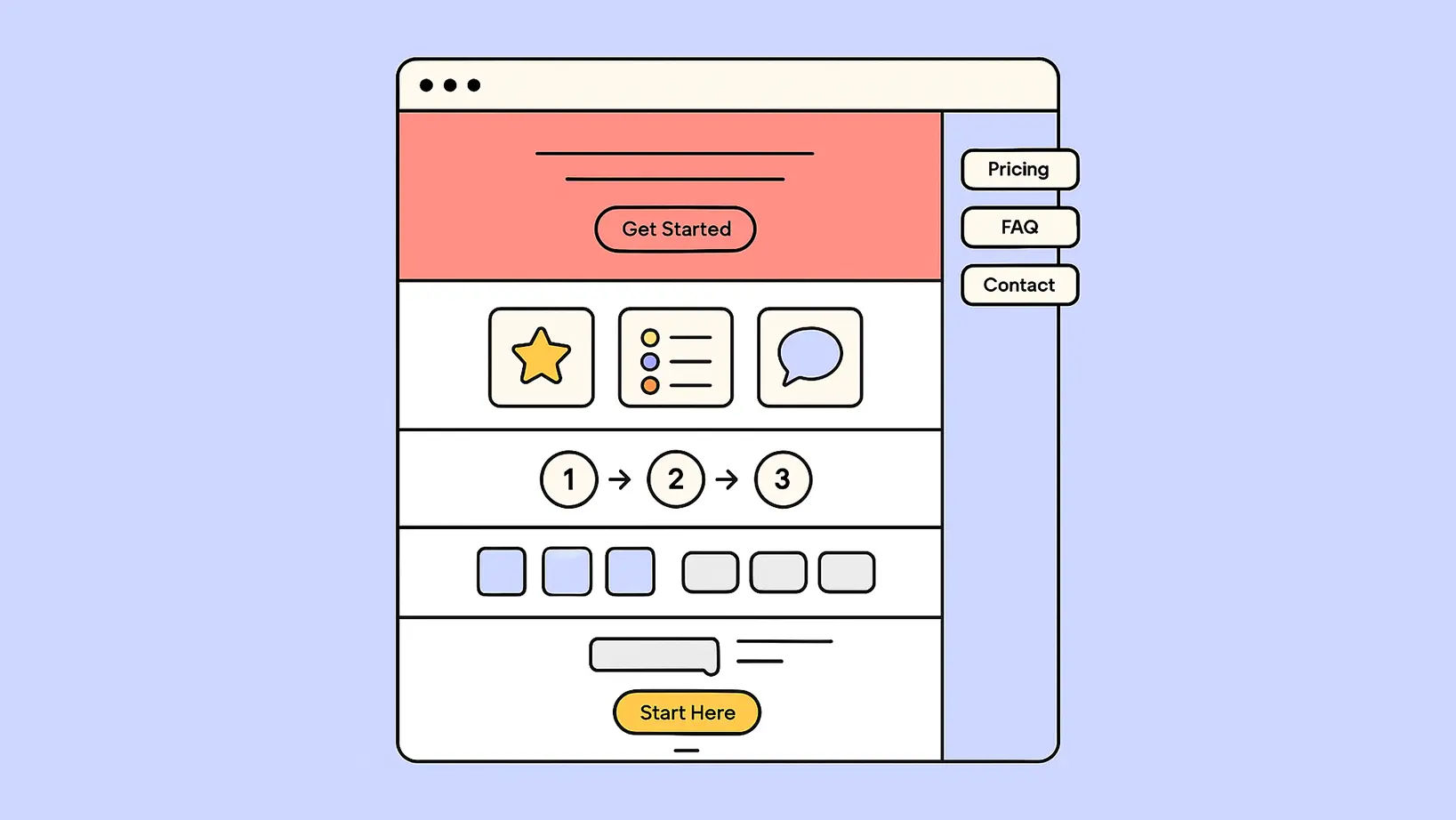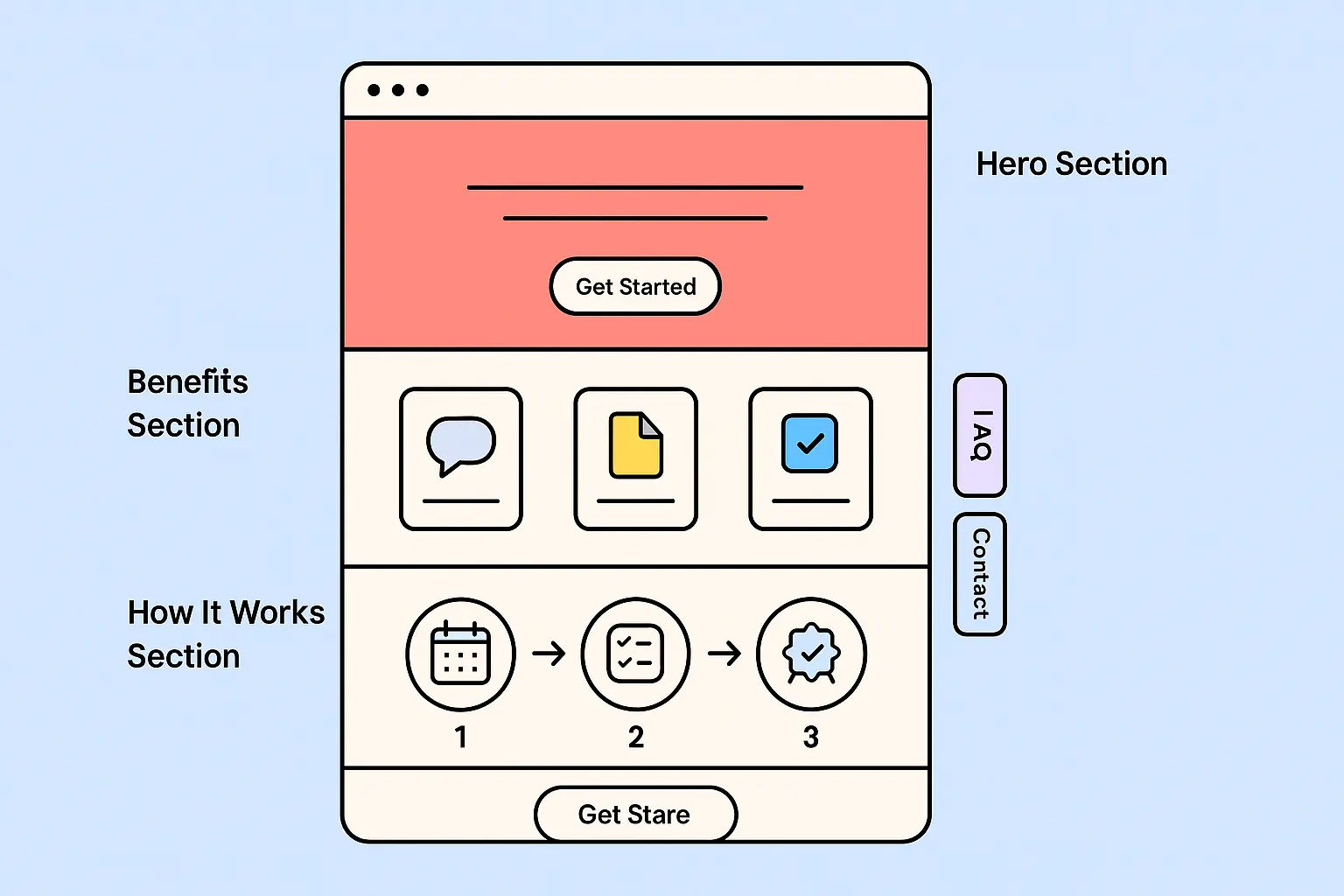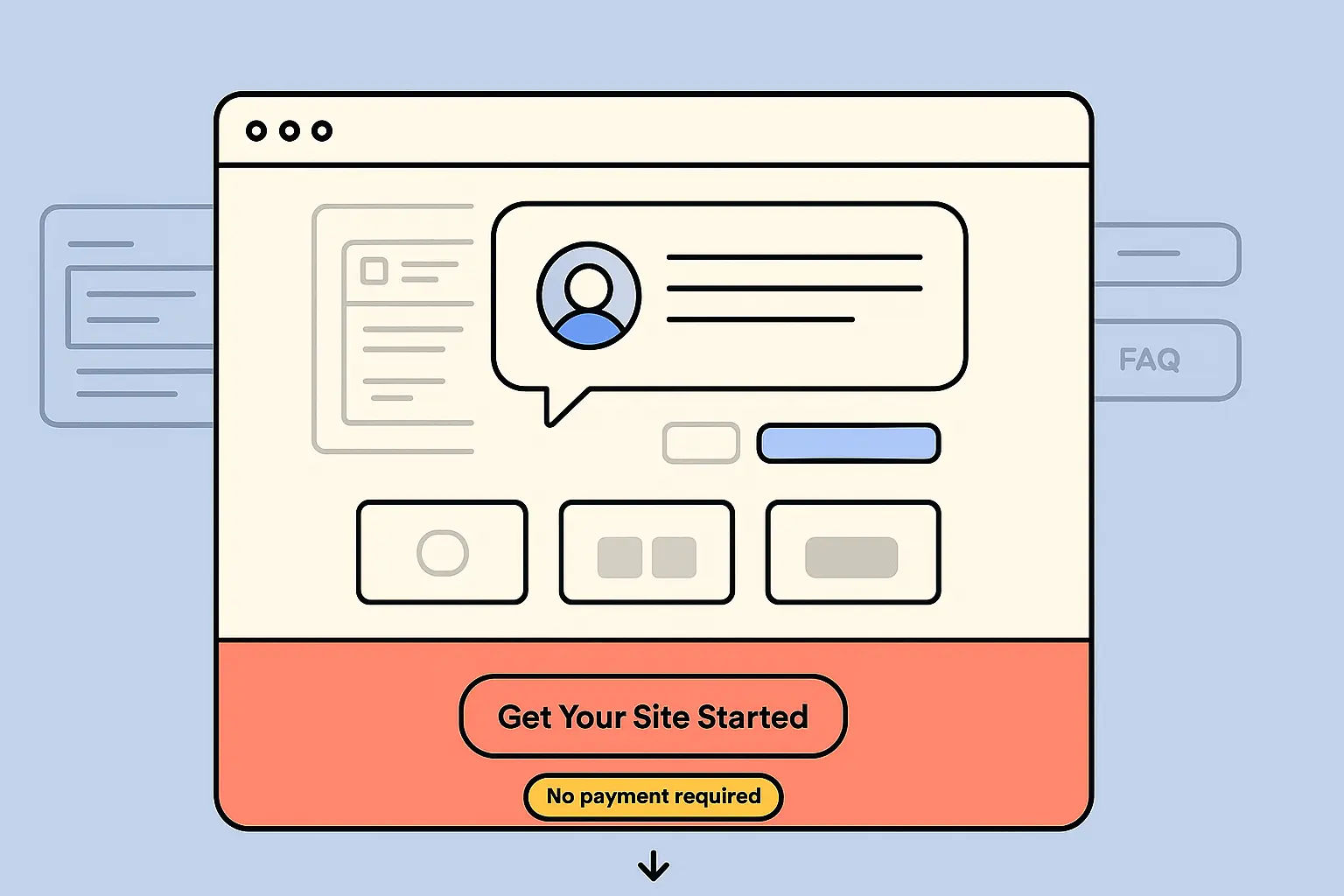
A One-Page Site Isn’t a Shortcut It’s a Strategy
When done right, a one-page site can convert faster than a bloated five-page build.
But when done wrong, it feels like a placeholder. Thin on content. No direction. Easy to forget.
This post shows how to structure a one-page site that feels complete, credible, and conversion-ready even if you're early-stage, solo, or pre-launch.
What One-Page Sites Are (And What They’re Not)
A one-page site:
Has a single scrollable page
- Uses internal anchor links (if needed)
- Focuses on one goal: get the user to take a specific next step
- Works great for early-stage services, productized offers, or lead magnets
It’s not:
- A temporary site “until the real one is done”
- A homepage with no context
- An SEO blog or content hub (those require multi-page builds)
One-page sites are lean, clear, and focused. That’s their strength if structured well.
The Core Sections You Actually Need
These five sections are non-negotiable:
- Headline / Subhead (hero)
- Benefits or outcomes
- How it works / process
- Proof (testimonials, logos, case study link)
- CTA (call to action)
Optional sections you can add:
- Who this is for (or not for)
- Pricing
- FAQ
- About
- Contact or calendar embed
Don’t think in “pages.” Think in scroll blocks each one earns the next.
Section 1: Hero That Answers “What Is This and Who Is It For?”
The first 200 pixels matter most.
Checklist:
- One clear sentence: what you do and who it's for
- Optional subhead: what changes for them
- CTA button (book a call, get started, see pricing)
- No carousels, sliders, or videos in the hero
Examples:
- Website-in-a-week for solo consultants
- Immigration forms filed right no guesswork
- Get your AI idea validated with real feedback in 7 days
Clarity beats cleverness.
Section 2: Benefits That Hit the Right Pain or Desire
Use 3–4 blocks with short headlines and 1–2 lines each.
Examples:
- No more back-and-forth one link, one booking
- Your legal docs, handled by pros not templates
- Launch your site without hiring a dev team
Use icons or checkmarks sparingly. White space does more for trust than visuals here.
Section 3: How It Works (In 3–4 Steps)

Use a numbered or horizontal process with 3–4 clear stages.
Example:
- Book a free intro call
- We create a plan that fits
- You get results within 2 weeks
- Follow-up or iterate (as needed)
Make this visual but simple. You’re showing how easy it is to move forward.
Section 4: Proof That Feels Real
You don’t need ten testimonials. You need one that’s specific.
Include:
- A quote (name + company or role, if possible)
- An outcome or transformation (even qualitative)
- A short blurb with a link to a longer case study (optional)
Also helpful:
- Logo row (grayscale, consistent size)
- Screenshots of feedback (from Slack, email, DMs)
- “Before and after” visuals if applicable
Section 5: CTA That Feels Natural and Safe

Don’t make visitors scroll back up.
Place your primary CTA at the bottom same as the one in the hero.
Examples:
- Book your 15-minute call
- See our pricing
- Get your site started
- Send me the free guide
Include microcopy under the button like “No payment required” or “Takes less than 60 seconds.”
Add Depth Without Adding Pages
If your one-pager feels thin, here’s how to add depth:
- Expand your FAQ with real objections
- Add screenshots or visuals of your process
- Include a “Who this is for” section to qualify
- Link to a Google Doc or Notion case study
- Add a loom walkthrough or intro video (optional, under CTA)
Don’t make it longer, make it more useful.
Bonus: Add a Sticky Header or Nav (With Anchor Links)

Even one-page sites can use nav bars. Use anchor links like:
- About
- How it works
- Testimonials
- Pricing
- Contact
This helps users move even if the scroll is short. It also makes your site feel complete.
Conclusion: One Page Can Do the Work of Five If You Write It Right
A one-page site isn’t a limitation. It’s a filter.
It forces clarity. It reveals positioning. It prevents content bloat.
And when it’s built right, it doesn’t feel like “just a page” it feels like a smooth, complete journey.
Use every section to move the reader forward and then stop. That’s the whole point.

Custom video production at scale
Aneeverse covers all video needs whether you're telling your brand story, launching a product or running ads. Discover how we can help you scale.
